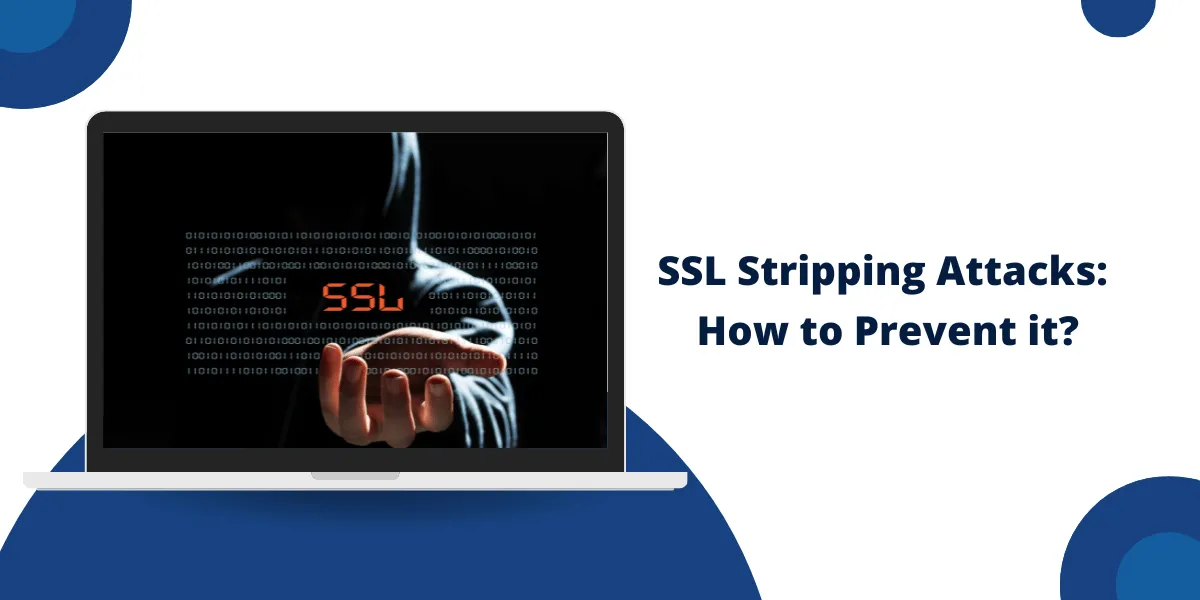What are SSL Stripping Attacks
SSL Stripping Attacks are a dangerous form of man-in-the-middle attack that intercepts encrypted web traffic and forces communication over an unsecured connection. These attacks circumvent HTTPS protections by tricking the victim’s browser into communicating over unsecured HTTP instead. Attackers exploit vulnerabilities in the SSL/TLS protocols to “strip” the encryption from requests and trick the victim into sending sensitive data over HTTP.
By intercepting encrypted traffic and redirecting it over HTTP, attackers can view or even modify sensitive data that was meant to be protected. SSL stripping underscores the importance of up-to-date encryption standards and protocols like HTTP Strict Transport Security (HSTS) that enforce HTTPS connections.
Key Takeaways
- SSL stripping attacks intercept encrypted HTTPS requests and redirect traffic to unsecured HTTP connections.
- Attackers position themselves between the victim and the server, impersonating both endpoints to intercept sensitive data.
- Common techniques include ARP spoofing, DNS spoofing, Content Swapping, and SSL downgrade attacks.
- Upgrading to TLS 1.2+ and enabling HTTP Strict Transport Security (HSTS) can help mitigate SSL stripping risks.
- Using encrypted DNS protocols like DNS over HTTPS (DoH) prevents attackers from spoofing DNS responses.
- Increased adoption of HTTPS Everywhere has made traditional SSL stripping harder, prompting new methods like subdomain hijacking.
What are Common Goals of SSL Stripping
- Intercept login credentials, financial data, and other sensitive information.
- Collect session cookies to hijack authenticated web sessions.
- Inject malicious code or content into unsecured traffic.
- Redirect users to fake phishing sites.
- Circumvent HTTPS protections on public Wi-Fi networks.
- Bypass company firewalls and security filters looking for HTTPS traffic
What are the Key Differences Between HTTP and HTTPS
To understand SSL stripping, it helps to recognize key differences in how HTTP and HTTPS connections are established:
HTTP Connections
- Unencrypted web traffic sent in plain text
- No authentication of servers – vulnerable to impersonation
- URLs begin with http:// and connect over port 80 by default.
HTTPS Connections
- Encrypted connections using SSL/TLS to protect data
- Servers are authenticated via trusted certificates to prevent spoofing.
- Connect over port 443 by displaying Tune Icon
- Requires an SSL/TLS handshake to establish a secure session
SSL stripping exploits these differences to trick browsers into sending sensitive data over http instead of https.
Next, we’ll look at how attackers accomplish this using various interception techniques.
What are Common Techniques Used in SSL Stripping Attacks?
SSL stripping involves intercepting secure traffic between the victim and the server and redirecting it over an unsecured connection. Attackers use a variety of techniques to insert themselves into the flow of traffic and tamper with encryption handshakes.
Common approaches include:
- ARP Spoofing
- DNS Spoofing
- Content Swapping
- SSL Downgrade Attacks
ARP Spoofing
ARP (Address Resolution Protocol) spoofing allows attackers on the same network segment to intercept traffic destined for a legitimate IP address. The attacker associates their own MAC address with the target IP address. When the victim tries to connect to the server, their traffic is sent to the attacker’s machine instead.
From this man-in-the-middle vantage point, the attacker can forward traffic to the real server while scanning for HTTPS requests to redirect over HTTP. ARP spoofing works well for local network attacks but is ineffective across the broader internet.
DNS Spoofing
With DNS spoofing, attackers provide a false IP address for the target domain name. When victims try to visit https://example.com, the spoofed DNS response resolves example.com to the attacker’s IP address instead of the real server.
This allows them to present fake certificates and proxy connections and analyze traffic for HTTPS requests to strip. DNS spoofing can enable SSL stripping beyond local networks.
Content Swapping
In content-swapping attacks, the attacker permits the initial HTTPS connection and certificate exchange to proceed normally. But after the encrypted session is established, they substitute malicious JavaScript into the web traffic, redirecting later requests over HTTP.
This JavaScript runs in the victim’s browser and changes future instances of https:// back to http://, allowing the attacker to intercept them over unsecured connections.
SSL Downgrade Attacks
Downgrade attacks target the SSL/TLS handshake process. The attacker impersonates the server and offers only deprecated SSL 2.0 or weak export-grade ciphers during the initial encryption negotiation.
If the client agrees to use these weaker encryption standards, the attacker can easily decrypt and read the intercepted traffic. Modern browsers won’t connect using obsolete ciphers, but this technique can succeed against outdated clients.
These examples demonstrate common ways attackers insert themselves into encrypted sessions to downgrade and intercept sensitive data. Next, we’ll cover how sites can defend against SSL stripping using security headers and other best practices.
How to Prevent SSL Stripping Attacks
SSL stripping exploits weaknesses in older encryption standards and handshakes. Adopting modern protocols and hardening web server configurations can effectively minimize risks:
- Upgrade to TLS 1.2 or Higher
- Implement HTTP Strict Transport Security
- Use Encrypted DNS Protocols
- Distribute HPKP Pins
- Limit Use of HTTP Links
Implement HTTP Strict Transport Security
HTTP Strict Transport Security (HSTS) prevents SSL stripping by telling browsers to only interact with the site over HTTPS, even if linked or redirected elsewhere. This thwarts attempts to downgrade connections.
Deploying HSTS via response headers ensures browsers only send sensitive data over TLS-encrypted sessions when communicating with the specified domain.
Use Encrypted DNS Protocols
Spoofing DNS responses allows attackers to redirect encrypted connections to their own servers. DNS over HTTPS (DoH) and DNS over TLS (DoT) solutions encrypt DNS queries to prevent tampering.
Major browsers now support DoH by default. For optimal security, organizations should operate their own encrypted DNS resolvers.
Distribute HPKP Pins
HTTP Public Key Pinning (HPKP) associates domains with authorized server certificate public keys. If a man-in-the-middle presents different certs, the browser blocks the connection.
Distributing trusted HPKP pins via headers ensures only genuine keys from the real server can establish HTTPS sessions.
Limit Use of HTTP Links
Attackers target HTTP links and resources loaded within HTTPS pages. When possible, sites should convert these insecure inclusions to HTTPS using protocol-relative links, eliminating downgrade opportunities.
Also, consider delivering ancillary content over HTTPS and enabling CORS protections for additional embedded resources.
Adopting these security enhancements makes it far more difficult for attackers to successfully intercept or downgrade encrypted traffic passing between clients and servers.
Real-World SSL Stripping Scenarios and Impact
SSL stripping provides cybercriminals an effective way to harvest sensitive data by circumventing transport layer encryption.
Some real-world examples showcase the dangerous potential of successful attacks:
Compromising User Accounts
One common goal is intercepting usernames and passwords to directly compromise user accounts. This could enable access to webmail, bank accounts, cryptocurrency exchanges, cloud services, and more.
Stripping login page encryption provides easy harvesting of credentials entered by victims. Cookies can also be stolen to hijack accounts without needing a password.
Plundering Financial Data
Attackers frequently target financial information, looking to scoop up credit card numbers, bank account details, and other valuable data. By downgrading HTTPS connections on banking, ecommerce, and payment processor sites, this sensitive info can be captured.
Billing addresses, social security numbers, bank balances, and transaction details are just some of the financial data that can be at risk during SSL stripping attacks.
Injecting Malware Payloads
Once encryption has been removed, attackers can modify and insert malicious content into intercepted traffic. This provides an opportunity to inject malware by pushing infected JavaScript files, browser exploits, and other active code into unsecured responses.
Drive-by downloads present a serious threat, as victims have no way to detect their connections have been compromised or content tampered with.
Sidestepping Firewall Protections
Organizations often use secure web gateways and next-gen firewalls that selectively block non-HTTPS traffic. By downgrading connections to HTTP, attackers bypass these defenses to access internal networks and resources.
Decrypted traffic also avoids deep packet inspection and monitoring capabilities built into many firewalls and security appliances.
These examples demonstrate why SSL stripping represents such a potent threat—the ability to subvert encryption provides attackers with an open door to harvest credentials, financial data, and more.
How to Evolve SSL Stripping Techniques and Countermeasures
As sites increasingly adopt HTTPS by default, traditional SSL stripping techniques have become less effective.
However, attackers continue innovating new methods to bypass upgraded defenses:
Subdomain Hijacking
With main sites now loading strictly over HTTPS, attackers target vulnerabilities in improperly configured subdomains. By hijacking a subdomain and acquiring its TLS certificate, they can perform SSL stripping against users who visit that specific path.
Proper subdomain isolation and decommissioning of old, unused ones minimize exposure to certificate misissuance. Regular scans using tools like SubFinder also help identify cases of subdomain takeover.
Downgrading HTTPS to HTTP/2
The HTTP/2 protocol can now initiate unencrypted connections over plaintext TCP. Attackers leverage this to downgrade HTTPS handshakes to HTTP/2 to evade HSTS protections.
Disabling HTTP/2 support and requiring dedicated IP addresses using SNI prevents incorrect protocol negotiation.
Targeting CDNs and Proxies
Stripping attacks aimed at content delivery networks and web proxies focus on intercepting traffic flows between services instead of directly targeting client connections. This approach hides man-in-the-middle actions from endpoint encryption.
Enforcing TLS between proxies, isolating CDN origins, and disabling caching on sensitive pages protects against attacks targeting web infrastructure.
Exploiting Browser Bugs
Browser vulnerabilities, such as retrying over HTTP on TLS failures, mishandling redirects from HTTPS to HTTP, and enabling mixed content on HTTPS pages, create openings for stripping attacks.
Keeping browsers fully patched and blocking legacy TLS protocols through CSP headers limits risk exposure.
Evolving techniques demonstrate that SSL stripping remains a relevant threat even as HTTPS adoption rises. Combining protocol best practices, proactive scanning, and ongoing patch management provides multilayer protection against emerging attack innovations.
Final Words
SSL stripping remains a prominent threat even as sites adopt modern encryption standards. By intercepting secure traffic and redirecting it over unprotected connections, attackers can harvest sensitive data and bypass firewalls.
Common techniques like ARP spoofing, DNS spoofing, downgrade attacks, and content swapping all aim to strip encryption layers from HTTPS traffic. Defending against SSL stripping requires updating legacy protocols, pinning certificates, expanding HTTPS coverage, and addressing browser vulnerabilities.
Staying vigilant for warning signs like certificate errors and HTTP loading on secure sites also helps users identify cases of encrypted traffic interception. Though challenges persist, a multilayer strategy focused on robust TLS implementation and configuration hardening provides the most effective way to prevent SSL stripping attacks.
Frequently Asked Questions About SSL Stripping Attacks
SSL stripping aims to bypass encryption and expose sensitive data.
Here are some common questions about these attacks:
How do attackers perform SSL stripping?
SSL stripping involves intercepting encrypted traffic and forcing it over unsecured HTTP connections instead of HTTPS. Common techniques include ARP spoofing, DNS spoofing, downgrade attacks, and content swapping.
What data is at risk during SSL stripping?
If encryption is removed, usernames, passwords, session cookies, financial details, personal information, and proprietary data sent over established HTTPS connections can be intercepted.
Are SSL inspection tools able to strip HTTPS traffic?
Yes, many SSL inspection tools used by network administrators strip SSL connections to monitor employee traffic and debug protocols. This demonstrates the risk of compelled certificate installation for decryption.
Can SSL stripping bypass HTTP Strict Transport Security (HSTS)?
No, HSTS tells browsers to only connect over HTTPS, preventing unsecured downgrades. However, attackers can still target users who haven’t visited the site before or steal the session cookie from the initial HTTPS load.
Is public Wi-Fi vulnerable to SSL stripping?
Yes, public Wi-Fi makes it easy for attackers to position themselves as a man-in-the-middle between users and websites. This allows them to intercept connections and redirect victims to fake hotspot login portals.
Can organizations fully prevent SSL stripping attacks?
Upgrading to modern TLS protocols, implementing HSTS, pinning certificates, and expanding HTTPS coverage significantly reduces risks. However, zero-day browser exploits or compromised endpoints could still enable targeted attacks.
How can users detect SSL stripping attacks?
Warning prompts when accessing HTTPS sites, invalid certificate warnings, HTTP loading on secure sites, and login portals on public Wi-Fi can indicate tampering. Browser add-ons that enforce HTTPS Everywhere are also recommended.
Proper TLS implementation and robust HTTPS deployment limit the attack surface for SSL stripping. Maintaining user awareness also helps identify cases of encrypted traffic interception.

Priya Mervana
 Verified Web Security Experts
Verified Web Security Experts
Priya Mervana is working at SSLInsights.com as a web security expert with over 10 years of experience writing about encryption, SSL certificates, and online privacy. She aims to make complex security topics easily understandable for everyday internet users.



